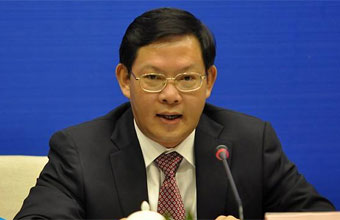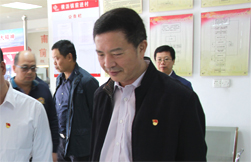Home> Guidelines
Living Environment
Living
With blue sky, crystal clear water, fresh air, green grass and carpets of flowers, Zhanjiang is a comfortable city to live in. For many years, Zhanjiang's urban air quality has been in the top five among major Chinese cities monitored by environmental protection agencies. The per capita park area reaches 12.7 square meters downtown, and greenery coverage in built-up areas hits 45.8 percent. It has gained the fame as a national garden city and an urban construction example city, and has won a residential environment prize as one of China's top 10 low carbon cities.
Education and Research
So far, there are seven colleges and universities in Zhanjiang, second only to Guangzhou, capital city of Guangdong province. It also has 75 secondary vocational schools, 39,000 professionals and technical personnel, three key laboratories, six engineering research centers, 18 research institutes, and 47 technology development institutions affiliated to enterprises. Together, they have contributed a lot to Zhanjiang's fast growth.
Transportation
A comprehensive transport system consisting of highways, waterways, railways, airlines and pipelines is taking shape in Zhanjiang, which is one of the 45 national highway transport hubs, one of the major coastal ports in China, and one of Guangdong’s four railway transport hubs.
Shenhai and Lanhai national highways extend through Zhanjiang and connect to provincial highways and county roads, thus forming a convenient road transport network. Zhanjiang Port, the largest natural deep water harbor in the Beibu Bay area, operates routes to more than 100 countries and regions in the world. Several major railway lines run through the city and connect it to other cities, with direct passenger trains opened to big cities including Beijing, Shanghai and Guangzhou. In addition, Zhanjiang has a national 4D-level airport, capable of landing a Boeing 757 and other large passenger planes, and air routes to Beijing, Shanghai, Guangzhou, Shenzhen and Hong Kong have been opened. Pipelines include a crude oil pipeline from Zhanjiang Port to Maoming and refined oil pipelines from Zhanjiang to the Pearl River Delta.
In the 12th Five-Year Plan period (2011-15), Zhanjiang has carried out the “Three Ring Roads and Four Accesses” transportation development plan to form a “one-hour economic circle”. The “Three Ring Roads” refer to the Downtown Ring, the Bay Ring, and the Peninsula Ring roads and the “Four Accesses” means that high-speed rails will connect Zhanjiang with other cities, highways will connect counties, and roads will connect towns and villages by the end of 2015. The plan will speed up the implementation of the “Rise of Zhanjiang in Five Years” plan.
Electric Supply
Zhanjiang has a gigantic power-supply system consisting of two thermal power plants with generating capacity of 1.2 million kW, along with a 100,000-kilowatt biomass power plant, two 50,000-kilowatt wind power plants and a 500-kilovolt converting station. In addition, it has ten 220-kV and 60 110-kV stations, ensuring 9.26 million kilovolts of main transformer capacity. This makes up a 500-kilovolt, 220-kilovolt and 110-kilovolt electricity-supplying network and backs local development with strong and constant power supply.
Communication
Systems of microwave communication, fiber communication, program-controlled telephone, mobile phone and automatic paging are available.
Water Supply
At present, Zhanjiang's water supply mainly depends on the Hedi Reservoir Leizhou Qingnian waterway and the Jianjiang water-supply hub. In 2012, their comprehensive water supply capacity in the urban area was 440,000 tons per day, and the daily sewage (mainly domestic sewage) treatment capacity was 380,000 tons.
The Jianjiang Water Hub, which was completed in March 2013, is a comprehensive water supply project. The 4.1-billion-yuan ($664 million) conservancy project is designed to supply 600,000 cubic meters of water daily, or 280 million cubic meters a year. The project is supposed to provide an iron-steel base in Zhanjiang and the Sino-Kuwaiti Refinery and Petrochemical Integrated project with 250,000 cubic meters and 85,000 cubic meters of water, respectively, on daily bisis.
In addition, it will be able to meet production and daily water needs in the nearby area till at least 2020. The project helps improve the investment environment in Zhanjiang and contributes to its economic and social prosperity. It has a particular significance for the development of Donghai Island.

 Print
Print Mail
Mail 5G construction supports Zhanjiang's high-quality development
5G construction supports Zhanjiang's high-quality development
 Acting mayor inspects project construction in Xuwen, Leizhou
Acting mayor inspects project construction in Xuwen, Leizhou Zhanjiang island an "egret paradise"
Zhanjiang island an "egret paradise"  Dancing egrets add vitality to Xiashan
Dancing egrets add vitality to Xiashan